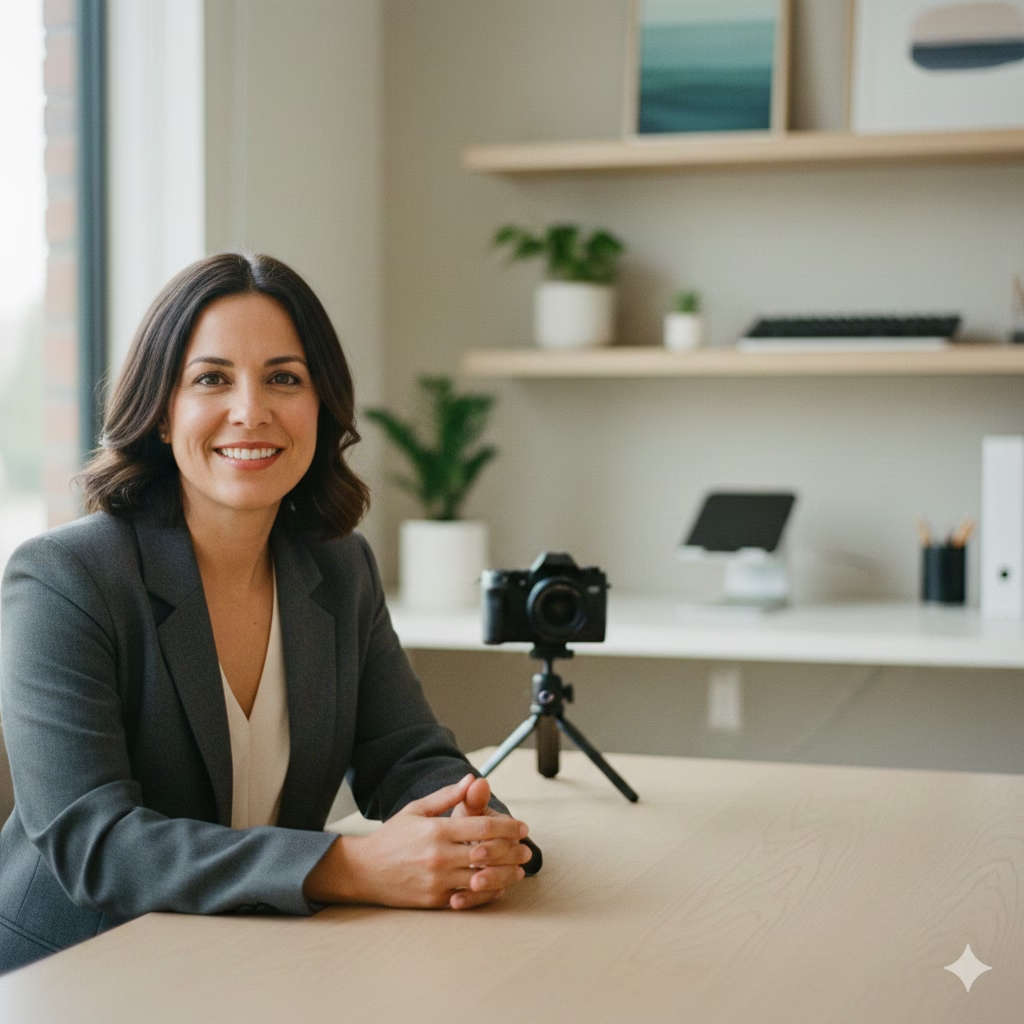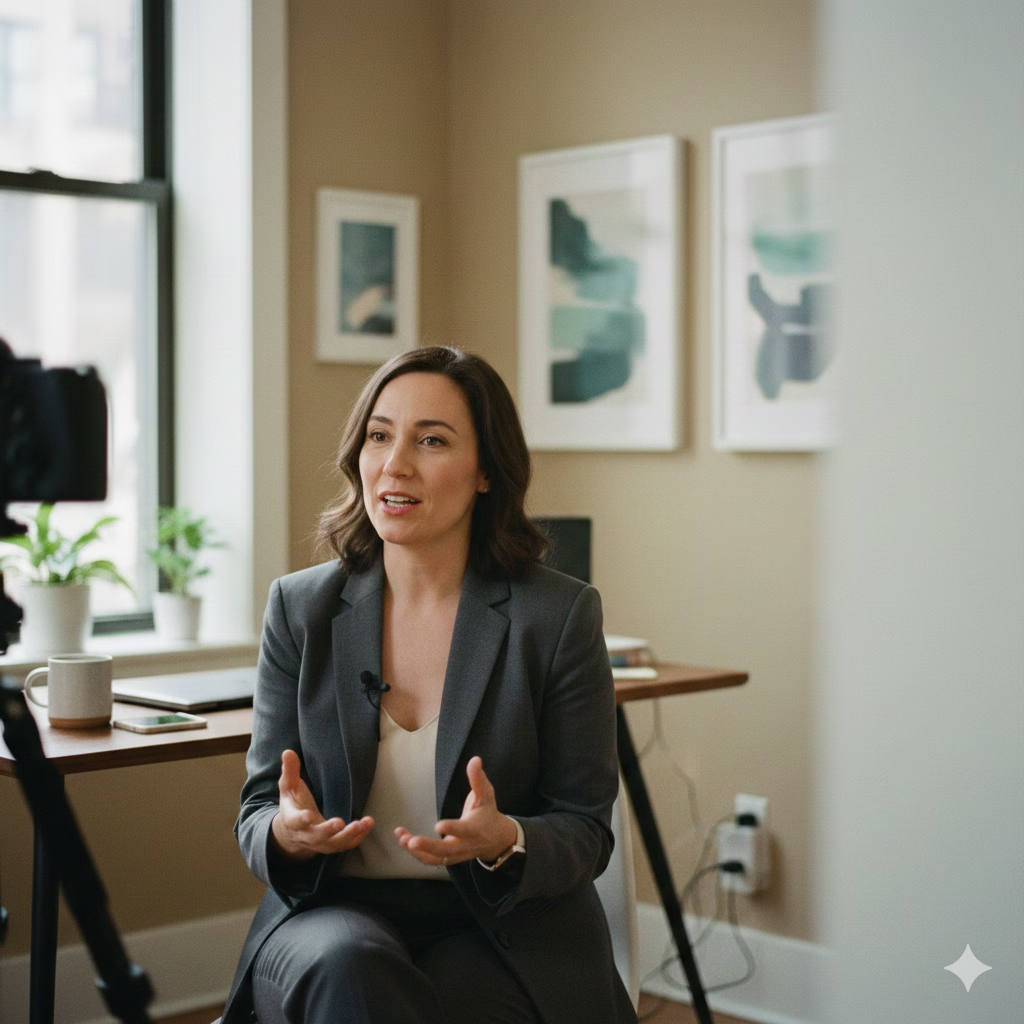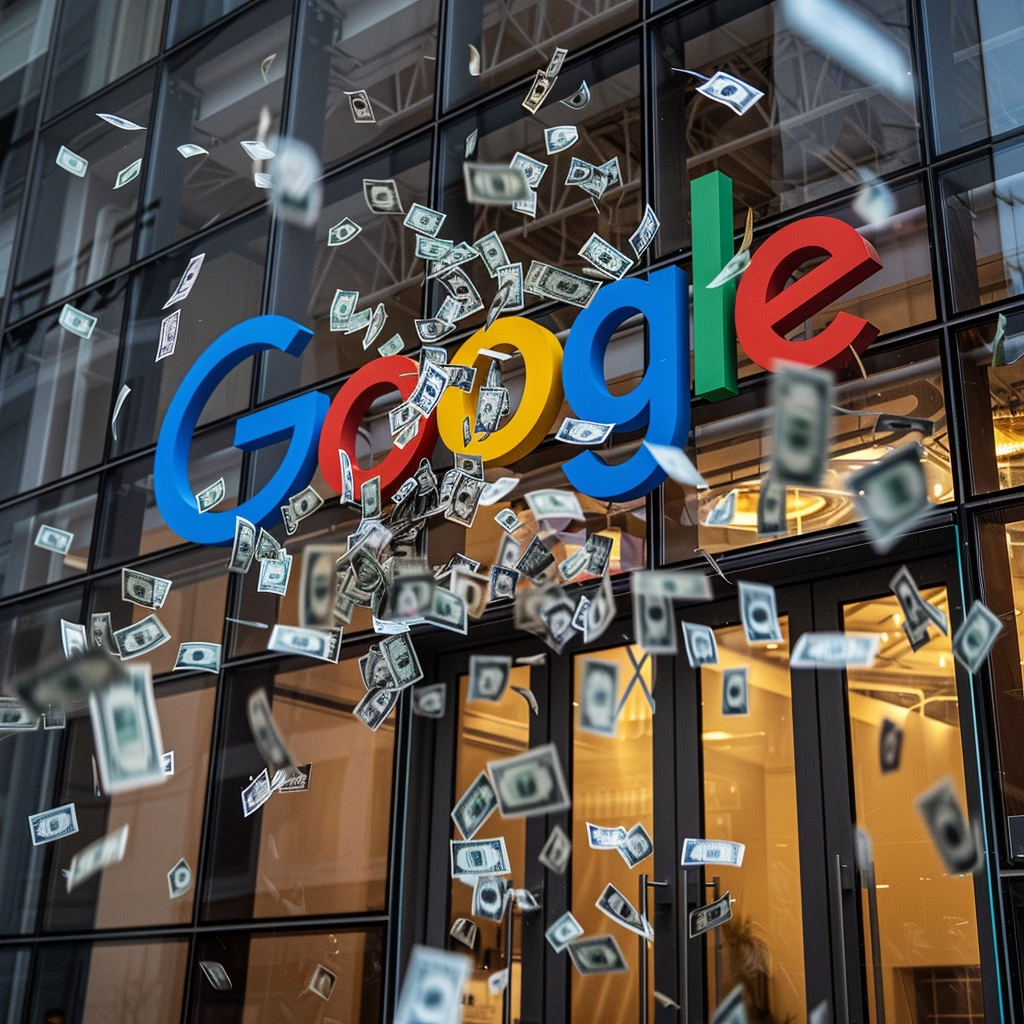Trust Closes Deals—And Nothing Builds Trust Faster Than a Client on Camera
Here’s the uncomfortable truth: your potential customers don’t trust you. They don’t know you, they’ve been burned before, and they’re drowning in promises from competitors who all claim to be “the best.”
In this environment, all the slick marketing copy and persuasive sales tactics in the world won’t move the needle. What will? Trust. And the fastest way to build that trust isn’t through another email sequence or Facebook ad—it’s by putting your happiest client on camera.
A single video testimonial can do what months of cold outreach can’t: transform a skeptical stranger into a qualified prospect who’s ready to buy. Here’s why trust is your most valuable marketing asset, and how video testimonials become your 24/7 sales team.
The Trust Problem: Why Your Marketing Isn’t Converting
Every day, your potential customers are bombarded with messages. Their inbox is flooded with cold emails promising “guaranteed results.” Their social feeds are cluttered with ads from companies they’ve never heard of. Their phone rings with sales calls from strangers.
The result? Paralysis. Not because they don’t need your service, but because they can’t distinguish between legitimate expertise and empty promises.
Consider the last time you hired a contractor, chose a financial advisor, or picked a new doctor. Did you go with the first Google result? The loudest advertiser? Of course not. You asked friends for recommendations, read reviews, and looked for proof that someone like you had succeeded with this provider.
People don’t buy from strangers—they buy from trusted advisors. Without trust, your marketing is just noise competing with everyone else’s noise.
This is particularly acute in service-based businesses. When you’re selling IT support, real estate services, fitness coaching, or consulting, you’re asking clients to bet their success (and often significant money) on your expertise. They need to believe not just that you can deliver, but that you will.
The attention economy has made this challenge even harder. Your prospects skim emails, scroll past ads, and tune out pitches within seconds. Even if your message is perfect, you’re fighting an uphill battle against years of conditioning that says “ignore the sales pitch.”
Here’s what this means for your business: without trust, all your marketing falls flat. You can have the best website, the most compelling offer, and the sharpest sales presentation, but if prospects don’t trust you, they won’t engage. They’ll compare your prices to competitors, delay their decision, or simply disappear into the void of “we’ll think about it.”
The companies that break through this barrier understand a fundamental principle: trust isn’t built through claims—it’s built through proof.
The Referral Analogy: Your Secret Weapon in Digital Form
Think about your best clients. How did they find you? If you’re like most successful service providers, the answer is referrals. A satisfied customer told their friend, colleague, or business partner about the results you delivered. That recommendation carried weight because it came from someone they trusted.
A client video testimonial is simply a referral you can scale.
When a prospect watches one of your clients explain how you solved their problem, something powerful happens in their mind: “If it worked for them, it might work for me.” This isn’t logical analysis—it’s psychological transference. They’re borrowing trust from your existing client and applying it to their own situation.
This works because prospects naturally look for people like themselves. When your IT client talks about how you solved their server issues, other business owners with similar challenges see themselves in that story. When your real estate client explains how you helped them find their dream home, other house hunters feel that same hope.
The key insight: borrowed trust is the fastest way to warm up cold prospects.
Consider the difference between these two scenarios:
Scenario A: You send a cold email explaining your 15 years of experience and your comprehensive approach to solving problems.
Scenario B: You send the same email, but include a 90-second video of a client explaining how you saved their business $50,000 in IT costs.
Which one gets the response? The video testimonial doesn’t just tell prospects you’re capable—it shows them what success looks like through the eyes of someone who was once exactly where they are now.
This is why referrals convert at 70% higher rates than cold outreach. The trust barrier has already been removed. Video testimonials give you the power to create that same trust transfer at scale, without asking your best clients to personally vouch for you with every new prospect.
The Power of Video: Why Moving Pictures Beat Moving Words
Text testimonials have been around forever, and yes, they’re better than nothing. But video testimonials operate on a completely different level because they engage multiple senses and trigger deeper psychological responses.
Video engages more than just comprehension—it triggers empathy. When prospects see a real person talking about their experience, they’re not just processing information. They’re reading facial expressions, hearing tone of voice, and picking up on emotional cues that text simply cannot convey.
Think about the last time you read a customer review versus watching a video review of the same product. The written review might have been logical and informative, but the video probably felt more convincing. That’s because humans are wired to trust what they can see and hear. Video feels authentic in a way that written testimonials—which could be fabricated—simply don’t.
This authenticity factor is crucial in today’s market. Prospects have been trained to be skeptical of marketing claims. They know companies write their own testimonials, cherry-pick positive reviews, and manipulate data to look better. But when they see a real person speaking naturally about their experience, that skepticism starts to melt away.
Text can be doubted or skimmed, but video feels real.
There’s also a practical advantage: attention span. A well-crafted 60-90 second video testimonial can communicate more trust-building information than a 500-word written case study. Your prospects are more likely to watch a short video than read a long testimonial, which means your message actually gets consumed instead of ignored.
Video testimonials also work across multiple learning styles. Some prospects need to see data and details (they’ll focus on the specific results mentioned). Others respond to emotion and connection (they’ll tune into the client’s enthusiasm and relief). Video delivers both simultaneously.
One great testimonial can work on your behalf 24/7. Unlike your sales team, video testimonials never take sick days, never have off days, and never forget to mention your key benefits. They’re your most consistent sales rep, delivering the same trust-building message with the same emotional impact every single time.
Where to Use Video Testimonials: Your Trust-Building Toolkit
The beauty of video testimonials is their versatility. Once you have them, they become assets you can deploy across every touchpoint in your customer journey.
Start with your homepage. This is where many prospects form their first impression of your business. Instead of leading with features and benefits, lead with proof. A video testimonial prominently placed above the fold immediately answers the prospect’s first question: “Can I trust these people?”
Use them in email follow-ups to leads. After someone downloads your lead magnet or requests a consultation, your follow-up sequence should include video testimonials relevant to their situation. If they inquired about IT security, send a testimonial from a client who had security concerns. If they’re looking at real estate in a specific neighborhood, include a testimonial from someone who bought there.
Deploy them in social media ads and organic posts. Video testimonials perform exceptionally well on platforms like LinkedIn and Facebook because they feel like authentic content rather than advertising. Your audience stops scrolling because they see a real person talking, not another sales pitch.
Make them your “digital sales rep” to shorten the sales cycle. When prospects are comparing you to competitors, a well-timed video testimonial can be the tie-breaker. Include them in proposals, reference them during sales calls, and use them to address specific objections or concerns that come up repeatedly.
The strategic advantage here is that video testimonials work at every stage of the buyer’s journey. They attract attention from cold prospects, build trust with warm leads, and provide social proof for people ready to buy. You’re not creating different content for different stages—you’re creating one asset that works everywhere.
Smart businesses also segment their testimonials by use case. If you serve both small businesses and enterprise clients, create separate testimonials for each audience. If you offer multiple services, get testimonials that speak to each offering. This allows you to match the right social proof to the right prospect at the right time.
Common Objections and How to Overcome Them
Despite the obvious benefits, many business owners hesitate to create video testimonials. Let’s address the most common objections head-on.
“My clients aren’t camera-ready.” This is actually a feature, not a bug. Prospects don’t want to see polished actors—they want to see real people who remind them of themselves. Some of the most effective testimonials come from clients who are a little nervous, speak naturally, and look like everyday business owners rather than professional speakers.
Authenticity trumps production value every time. A slightly awkward but genuine testimonial will always outperform a slick but obviously scripted one. Your prospects can spot the difference immediately, and they’ll trust the authentic version more.
“I don’t know how to produce professional-looking videos.” You don’t need Hollywood production values. A clean background, decent lighting, and clear audio are sufficient. Many powerful testimonials are shot on smartphones with nothing more than natural light from a window.
That said, if you want to remove this barrier entirely, hire a simple done-for-you service. Many video production companies specialize in testimonials and can handle everything from scheduling the interview to delivering the final video. The investment typically pays for itself with the first new client the testimonial helps you land.
“My clients won’t want to do it.” You’d be surprised. Most satisfied clients are happy to help, especially if you make the process easy and explain how it helps them too (testimonials often result in referrals back to the client’s business). The key is asking the right clients—those who are genuinely excited about their results—and making the request at the right time, when their satisfaction is highest.
“I don’t know what questions to ask.” Keep it simple. Ask them to describe the problem they had before working with you, what the solution process was like, and what results they achieved. Then ask if they would recommend you to someone in a similar situation. These basic questions generate the core elements every testimonial needs: problem, solution, outcome, and recommendation.
The biggest obstacle is usually perfectionism. Business owners delay creating testimonials because they want everything to be perfect. But done is better than perfect, and one authentic testimonial today is worth more than three polished testimonials next year.
Case Example: How One Testimonial Generated Five New Clients
Consider Sarah, who runs a small digital marketing agency focused on local restaurants. She’d been struggling to convert leads from her website and cold outreach. Most prospects would engage initially but then disappear during the sales process.
Sarah’s breakthrough came when she asked her happiest client—a pizza restaurant owner named Mike—to share his experience on camera. Mike had been skeptical about digital marketing but decided to try Sarah’s services after his foot traffic dropped during a slow season.
In the 90-second testimonial, Mike explained how Sarah had helped him set up targeted Facebook ads and Google My Business optimization. He mentioned specific results: a 40% increase in online orders and enough new customers to hire an additional part-time employee. Most importantly, he talked about how Sarah had educated him throughout the process and made digital marketing feel manageable rather than overwhelming.
Sarah placed this testimonial prominently on her homepage and included it in her email follow-up sequence for new leads. Within three months, she had tracked five new clients who specifically mentioned Mike’s testimonial as a factor in their decision to hire her.
The impact went beyond just new clients. Prospects were coming into sales conversations already convinced of Sarah’s capabilities, which shortened her sales cycle from an average of three weeks to less than one week. Instead of spending time building credibility, she could focus on understanding their specific needs and crafting solutions.
One testimonial had effectively multiplied Sarah’s sales capacity while improving her close rate. The restaurant owners who saw Mike’s testimonial thought, “If Sarah can help a pizza place like Mike’s get those results, she can probably help my restaurant too.”
This is the power of borrowed trust in action. Mike’s credibility became Sarah’s credibility, and his success story became proof of what other restaurant owners could achieve.
The Takeaway: Your Marketing Multiplier Is Already in Your Client Base
The math is simple: trust closes deals. Everything else—your website, your proposals, your sales presentations—is just information. Information informs, but trust transforms prospects into clients.
You already have the raw material for building this trust: happy clients who’ve achieved real results working with you. They represent proof of your capabilities, evidence of your character, and examples of what success looks like in your prospect’s world.
You already have happy clients—put them on camera. That satisfied customer who refers business to you regularly? Ask them to share their story on video. The client who always responds enthusiastically when you check in? They’re probably perfect testimonial material. The business owner who credits you with saving them time, money, or stress? That’s exactly the story your prospects need to hear.
The beauty of this approach is that it’s scalable without being salesy. One great testimonial can work for months or even years, building trust with hundreds of prospects without requiring ongoing effort from you. While your competitors are sending more cold emails and buying more ads, you’re leveraging authentic social proof that works around the clock.
One testimonial is worth 1,000 cold calls because it does what cold calls can’t: it removes the trust barrier before the sales conversation even begins. Instead of convincing skeptical strangers that you’re credible, you’re talking to qualified prospects who already believe in your capabilities.
The companies that understand this principle don’t just get more leads—they get better leads. Prospects who’ve seen video testimonials come into sales conversations already educated about your approach and convinced of your competence. They’re not shopping around for the cheapest option; they’re trying to determine if you’re the right fit for their specific situation.
This is how you stop competing on price and start competing on value. This is how you turn your marketing into a trust-building system rather than an attention-seeking expense. This is how you create a sustainable competitive advantage in a market full of me-too providers.
Ready to build trust that converts? Start with your happiest client. Ask them to spend 10 minutes sharing their story on camera. Keep it simple, keep it authentic, and watch what happens when prospects can see for themselves what success looks like.
Your next client is waiting to hear from someone they trust—your current client. Give them that voice, and start building scalable trust on autopilot.







